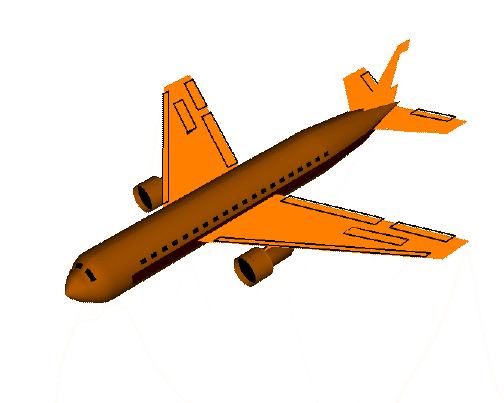 |
|
Glenn
|

 |
|
Glenn
|

This slide shows what happens when the pilot deflects the rudder, a hinged section at the rear of the vertical stabilizer.
As described on the shape effects slide, changing the angle of deflection at the rear of an airfoil will change the amount of lift generated by the foil. With increased deflection, the lift will increase in the opposite direction. The rudder and vertical stabilizer are mounted so that they will produce forces from side to side, not up and down. With greater rudder deflection to the right as viewed from the front of the aircraft, the force increases to the left (as shown in this slide). The change in force (lift) created by deflecting the rudder causes the airplane to rotate about its center of gravity, as shown in the slide. If the pilot reverses the rudder deflection to the left, the aircraft will yaw in the opposite direction.
[You can test this effect yourself using a paper airplane. Just cut a control tab in the rear of the body. Bend the tab right to make the tail go right and the nose go left, and the airplane will turn to the left when it is flown. The same thing will work on a simple wooden glider. The tab can be a yellow stick-um or tape attached to the vertical stabilizer.]
On many aircraft, the vertical stabilizer and rudder create a symmetric airfoil like the one shown on the left of the shape effects slide. This combination produces no lift when the rudder is aligned with the stabilizer and allows either left or right forces, depending on the deflection of the rudder. Some fighter planes have two vertical stabilizers and rudders because of the need to control the plane with multiple, very powerful engines.
Go to...
byTom
Benson
Please send suggestions/corrections to: benson@grc.nasa.gov